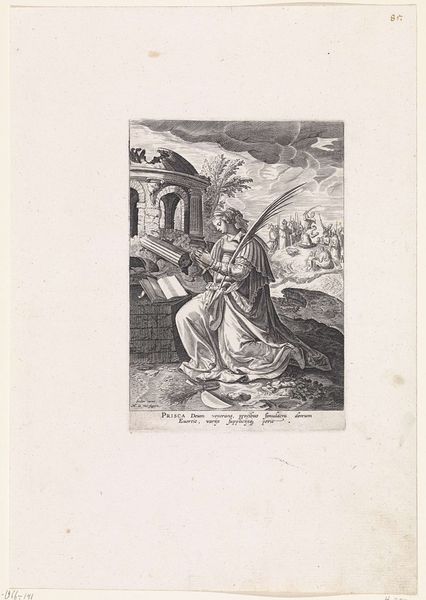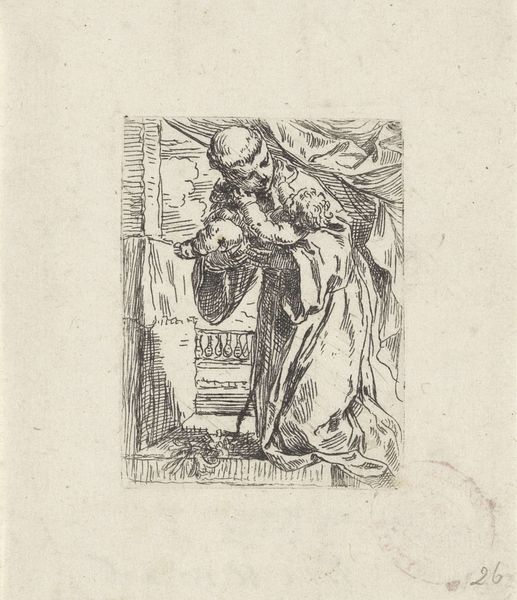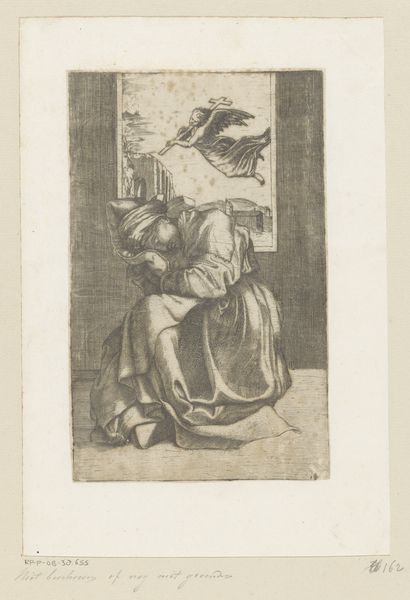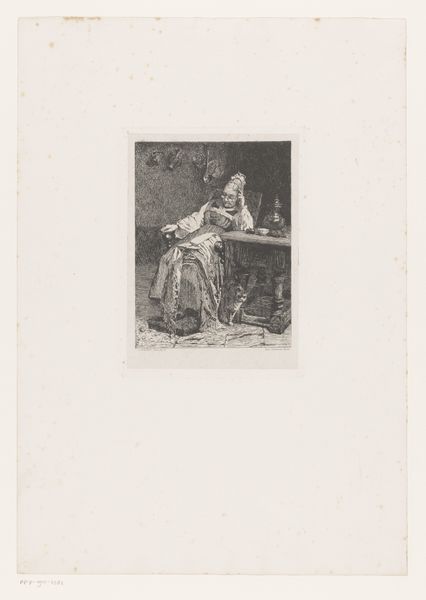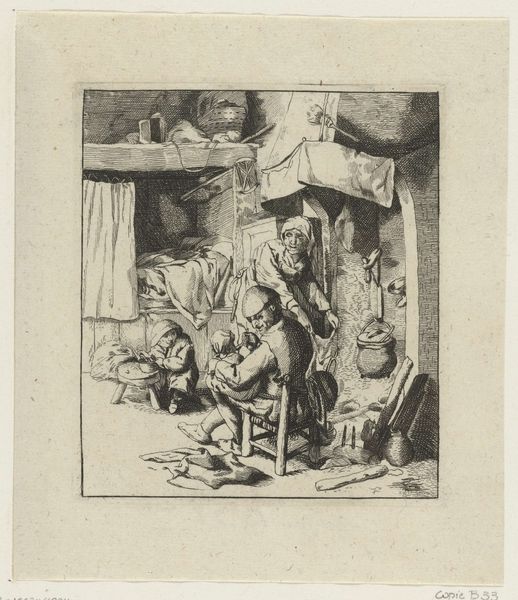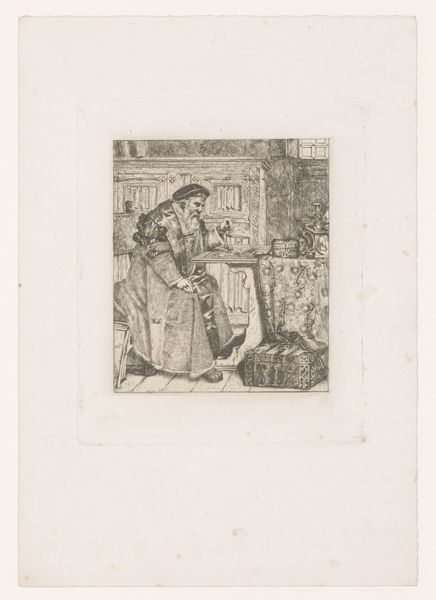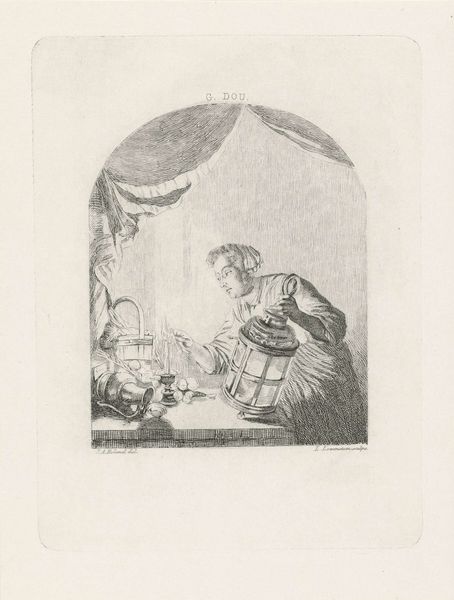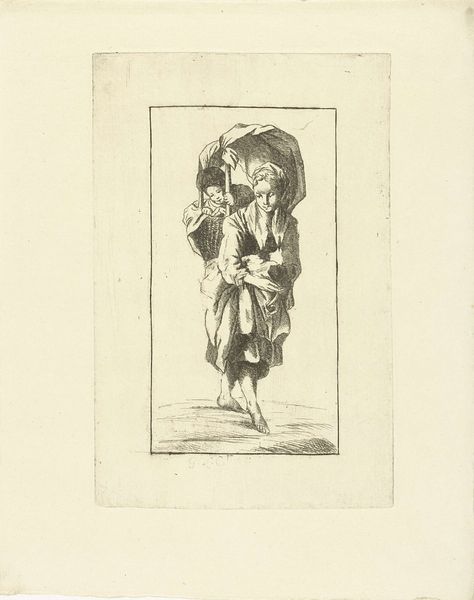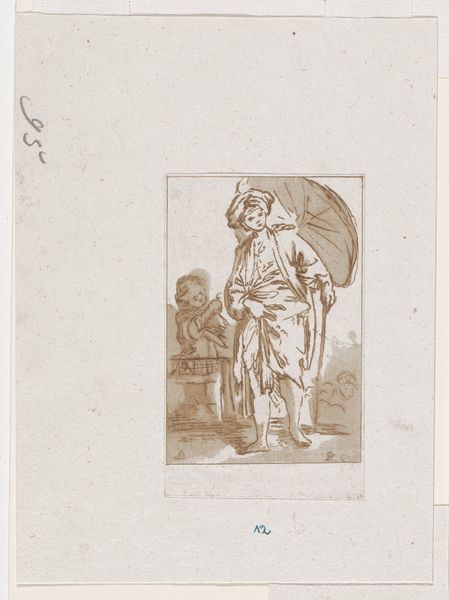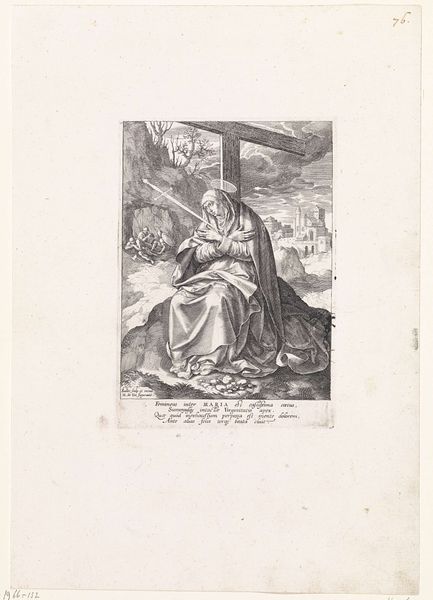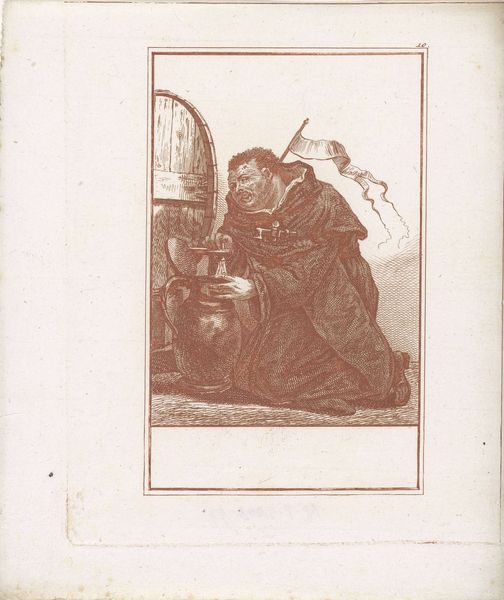
Dimensions: height 190 mm, width 129 mm
Copyright: Rijks Museum: Open Domain
Editor: Here we have Johann Sadeler's "Heilige Christina," an engraving from between 1583 and 1587, currently housed at the Rijksmuseum. It’s giving me serious Baroque drama, you know? The detail is incredible for a print, and there's so much going on—fire, snakes... What's your take on it? Curator: Drama indeed! It's a snapshot of 16th-century religious fervor rendered with an incredible artistic skill. Think of it as propaganda meets artistry, aiming for maximum emotional impact. See how Christina sits serenely amidst the chaos? It’s all very intentional. The snakes at her feet, the burning city in the background... it’s less about historical accuracy, more about visualising a triumphant narrative. Notice also her piercing but yet resigned glance, is she looking back in dismay or bravely into the future? Editor: Right, so the chaos represents the turmoil she faced, and her calm is her faith shining through. But why all the snakes? Curator: Snakes often symbolise evil or temptation, right? But in this image, and this is where it gets really interesting, they can also stand for healing and transformation—consider the Rod of Asclepius, a symbol still used in medicine today. The Baroque period was big on multiple meanings! Now, given what Christina stands for, how might that duality play into your interpretation? Editor: Oh, wow, I never thought of it that way! So the snakes aren't *just* evil, but also representative of spiritual resilience in her story. So cool how one little detail can shift the whole thing. Curator: Exactly! And that’s the beauty of art, isn’t it? Always revealing new layers with a closer look. Always something fresh, don't you think?
Comments
No comments
Be the first to comment and join the conversation on the ultimate creative platform.

